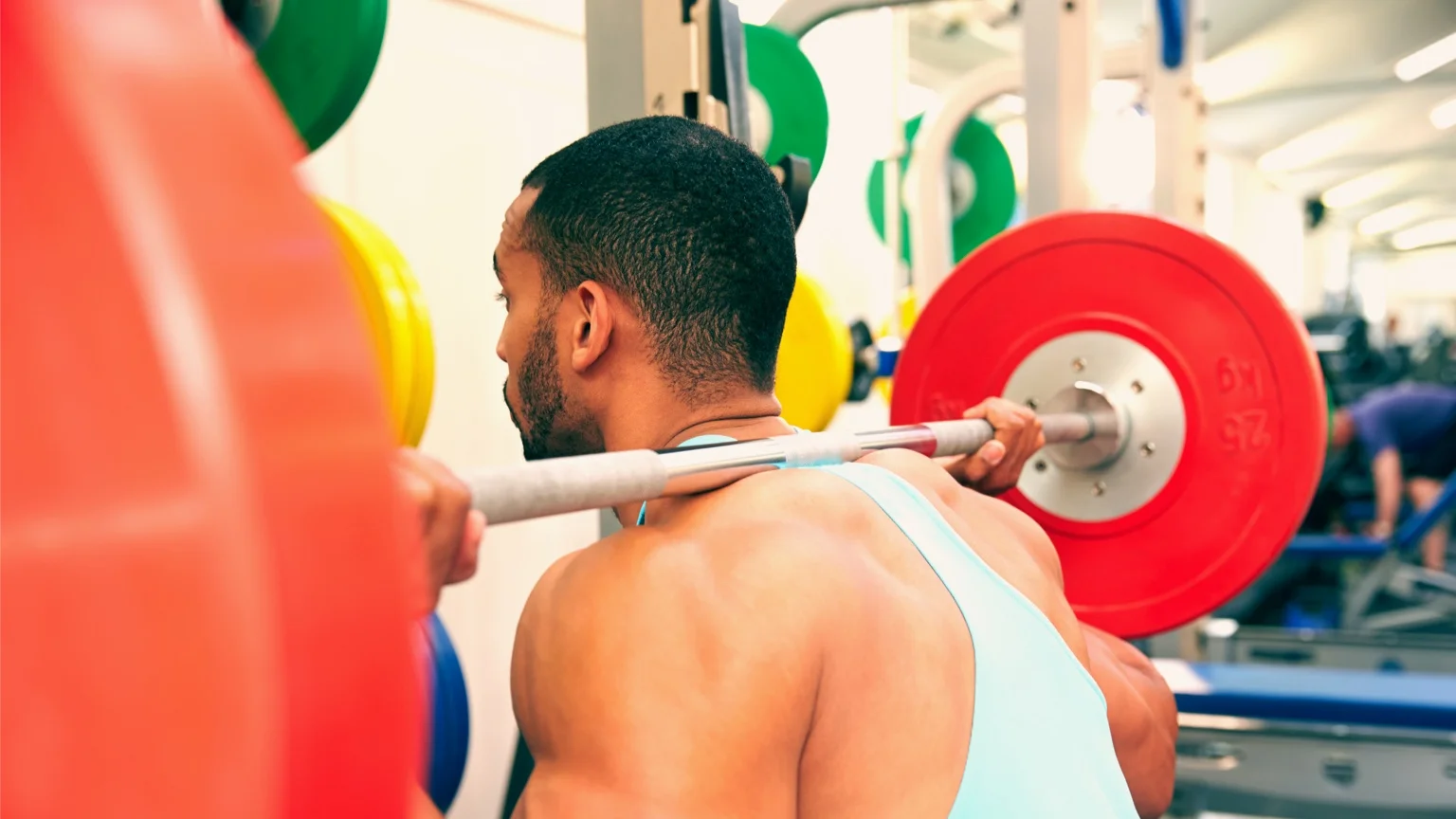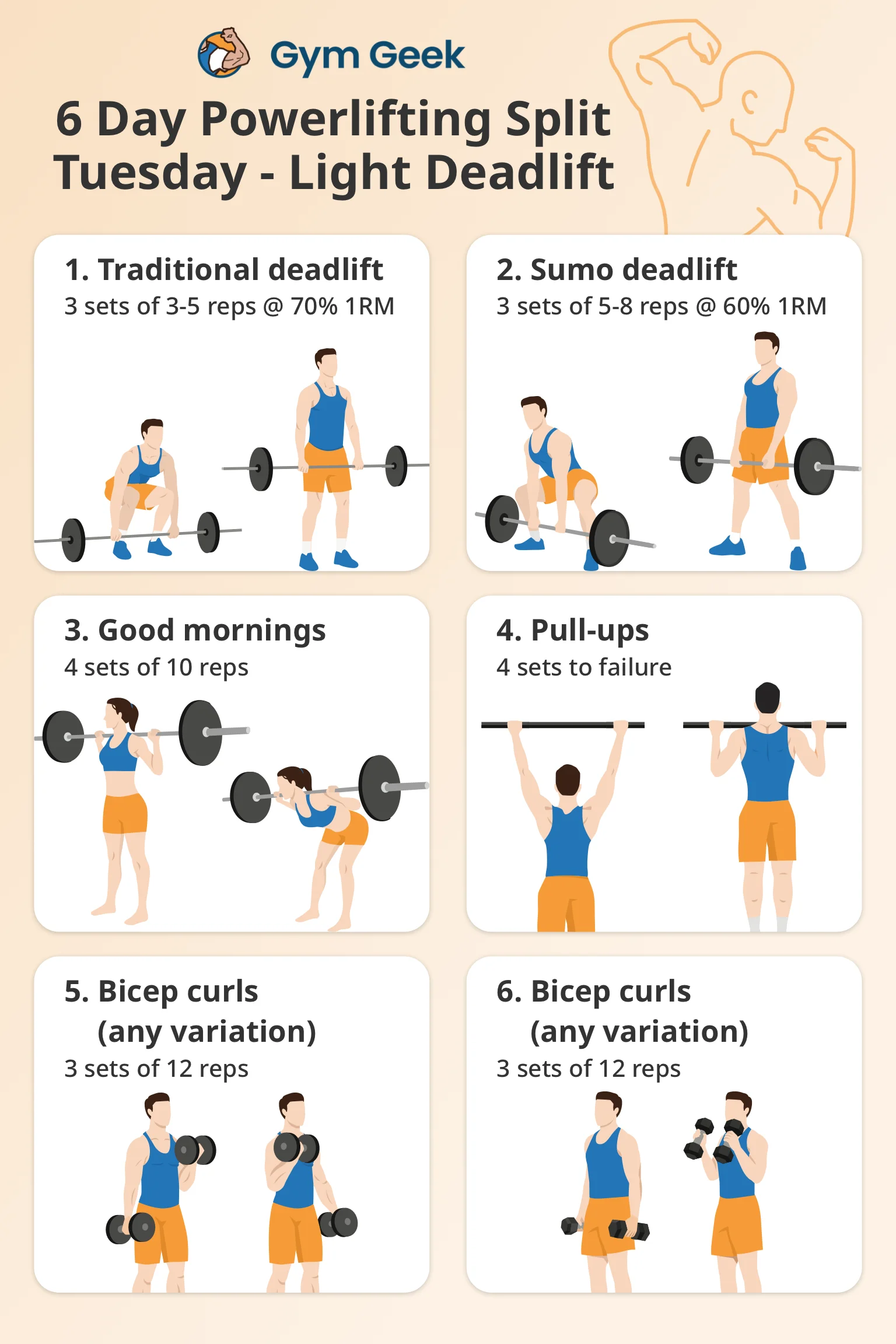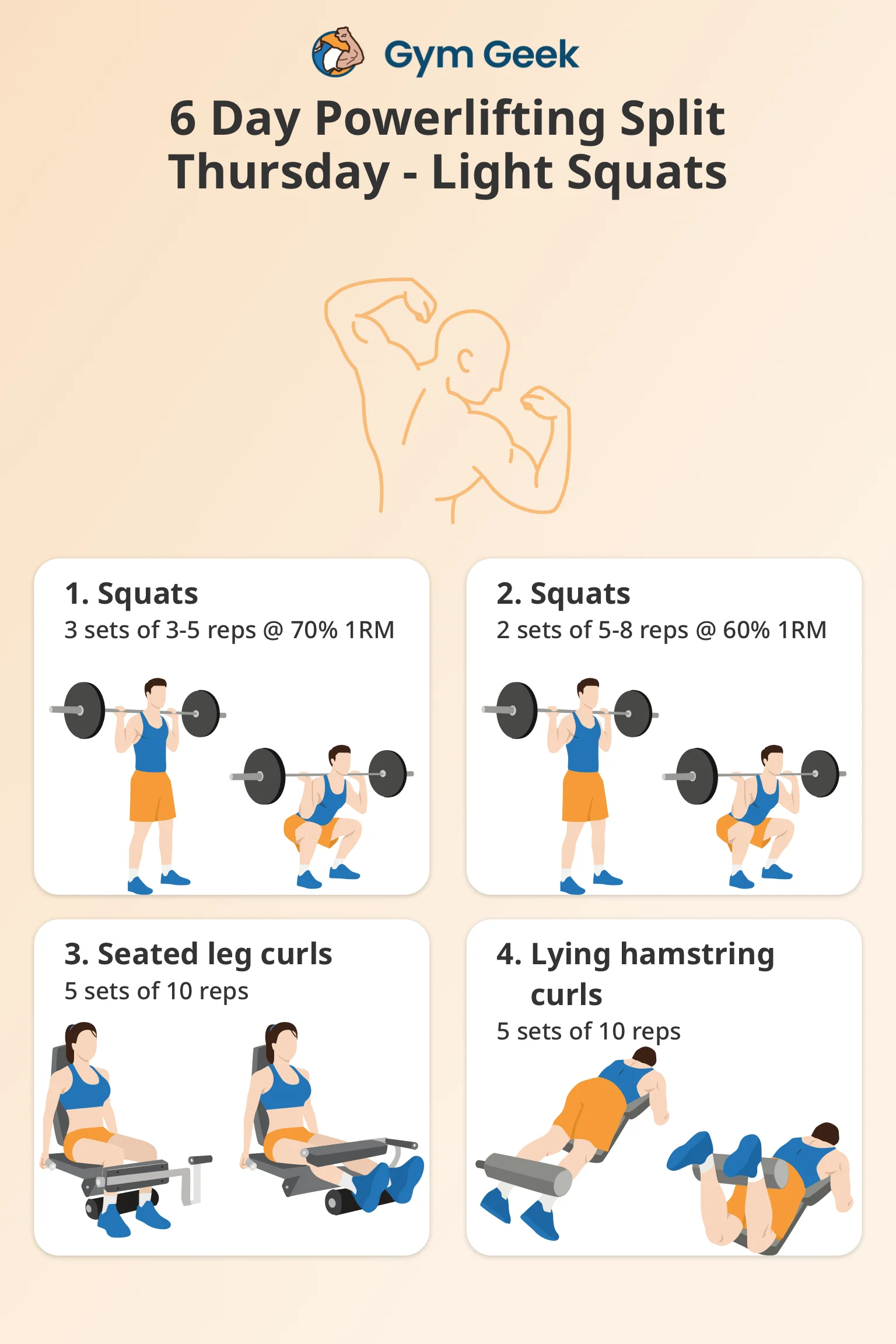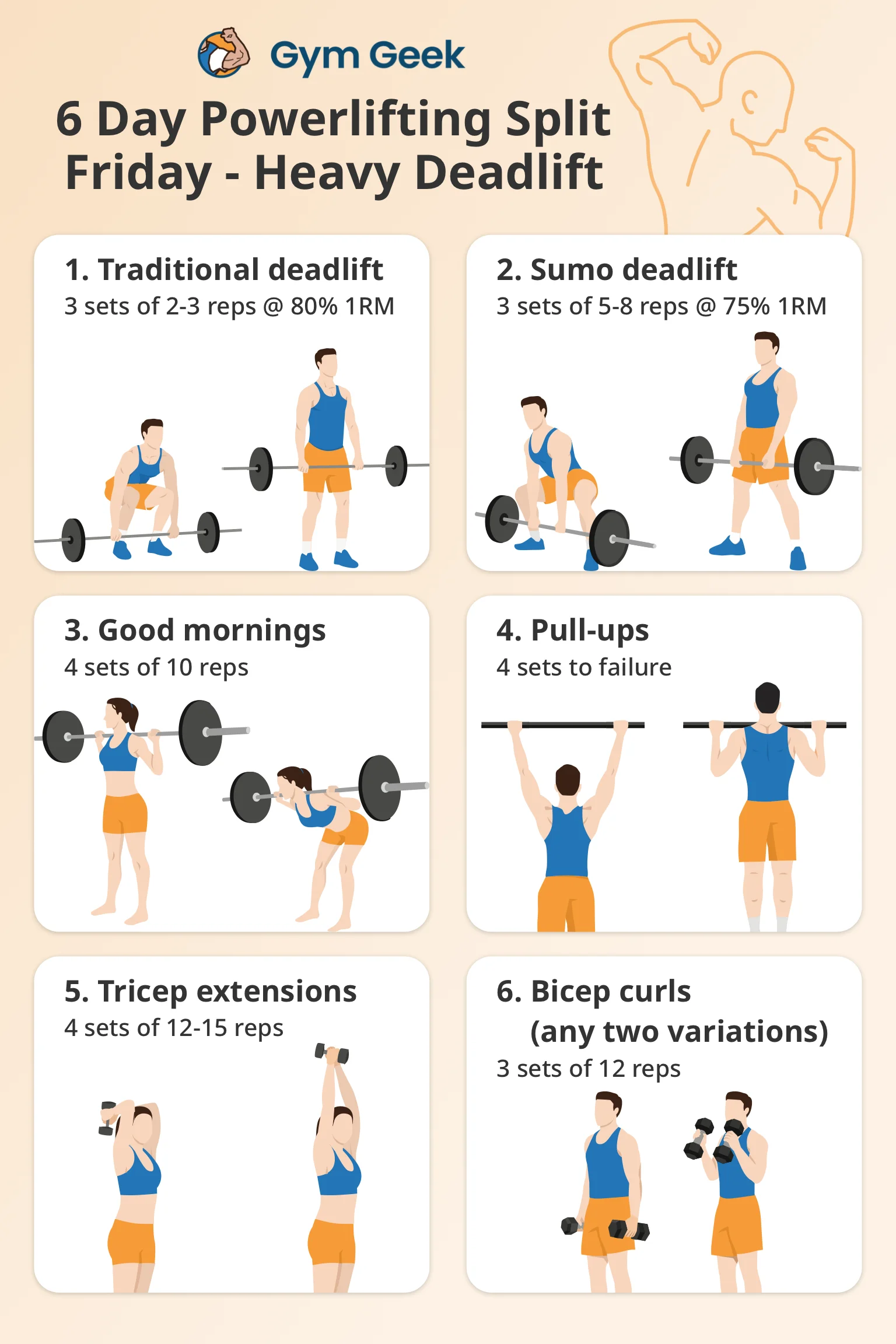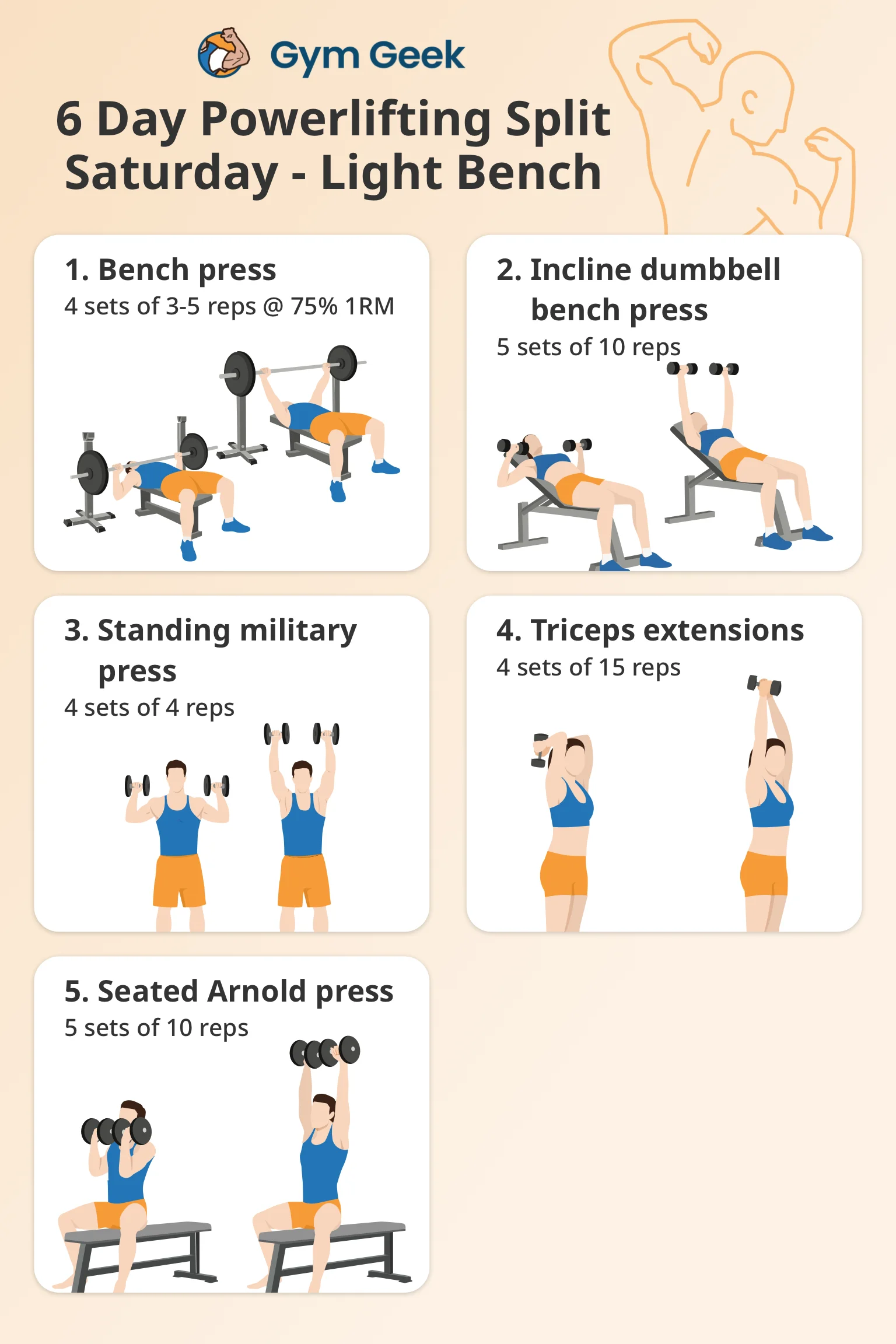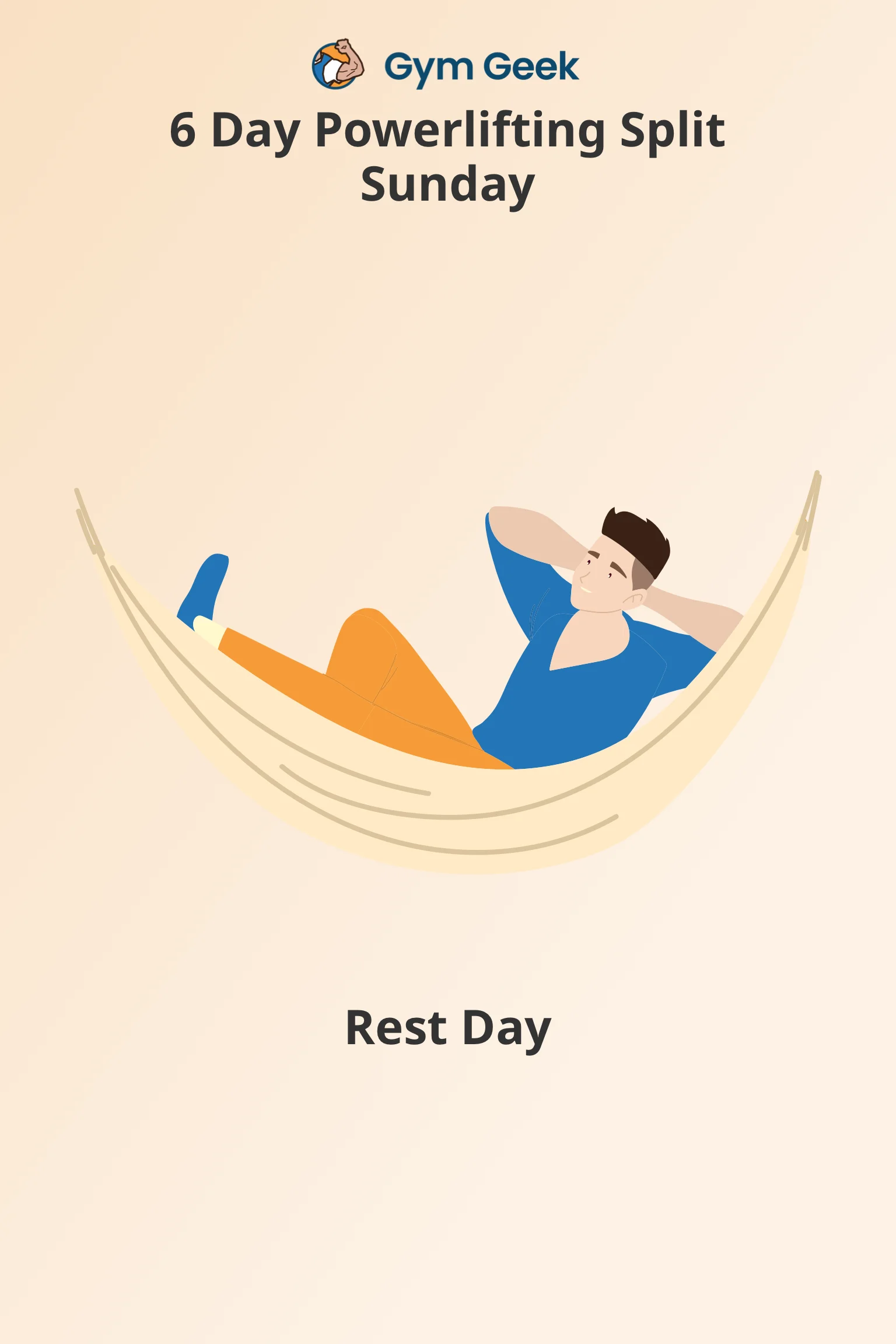
The routine
About this routine
Should powerlifters train 6 days per week?
You won't find many powerlifters training 6 days per week, with 4 day or 5 day routines being easier to manage. But if you're an advanced powerlifter who has been lifting for years, you might be thinking about training 6 days per week to keep progressing.
All powerlifting routines are built around the three key lifts: squats, deadlifts and bench press. There's some merit to training 6 days per week, because you can dedicate two days per week to each muscle group.
Training each muscle group twice per week maximizes your training frequency. This allows you to increase your overall training volume, which is key for building strength and gaining muscle. For powerlifting performance, it's important to focus on lifting close to your one-rep max (1RM) with heavy weights.
For each exercise, Gym Geek's 6 day routine dedicates one day to a "heavy (max effort)" day and the other to a lighter lifting day. This allows you to train close your your 1RM, while managing the overall volume in the routine to reduce the risk of overtraining.
Of course, you'll only have 1 day of rest per week, so this routine is not for the fainthearted.
Why train 6 days per week?
Because there's 3 powerlifting moves, you will naturally need to follow a 3 day or 6 day powerlifting split to dedicate each day to a specific lift.
The 3 days per week routine is popular for powerlifting beginners. It’s a simple routine where each day is dedicated to one of the key lifts: bench, deadlifts then squats. There are one or two days of rest between each workout.
The most effective workout routines see you train each muscle group twice per week. But it's important you have adequate rest days between training the same muscle groups. If you don't, you put yourself at risk of overtraining.
For more advanced powerlifters, the 4 day and 5 day powerlifting routines both train each lift twice per week. But, because of the limited training days, they have to achieve this by combining multiple lifts into the same workout session!
Going from 3 days per week to 6 days per week is too big a jump in volume, but when should you consider moving from a 4 day or 5 day split to a 6 day split?
In fact, there are two answers to this, and it depends on your goals...
To increase the volume
Training volume is the total amount of work you are doing through your entire workout routine. Volume = Frequency x Intensity. To make your routine have higher volume, you can either increase the frequency of your workouts (add a day) or increase the intensity of each workout. (Or both!)
Because powerlifting sees you train with heavy weights, your workouts are already intense in a 4 or 5 day routine.
6 days per week allows you to train with more volume overall. If you’re comfortable with the 4 day or 5 day split and feel you are reaching a plateau, you can train 6 days per week to further ramp up your training volume. This way you keep the intensity and frequency high.
To spread the volume over the week
Training 4 or 5 days per week means you’ll be working with a high intensity. If you move to a 6 day powerlifting split, you don’t have to increase overall volume of your routine. Instead, you can use the 6 days to more evenly spread the training volume through the week. This will make each workout have less intensity, which can make the routine more manageable.
Counterintuitively, training 6 days per week can actually help with recovery. Although you are increasing the frequency, if you manage the volume and intensity of your workouts, you can aid recovery (particularly after your heavy lifts).
More time for accessory exercises
With more training days, you free up extra training time to work on accessory exercises. This is a big benefit of training more frequently, as you can adjust the routine to specifically target weak muscle groups.
When you are training 4 or 5 days per week, the lifts are already combined on some days, making it more difficult to 'design around' the main lifts.
